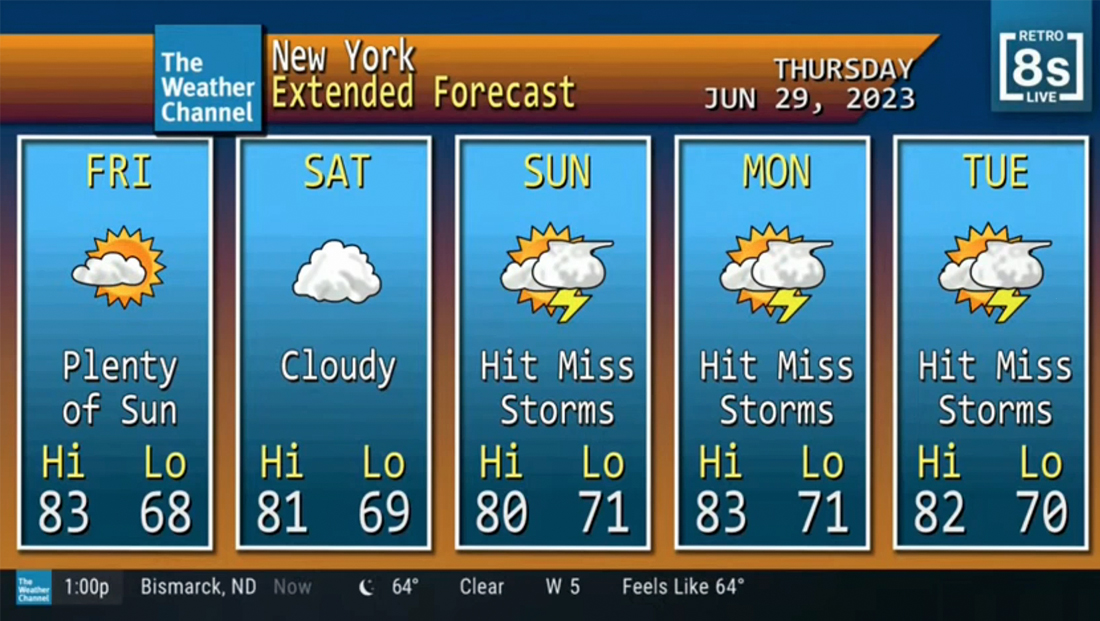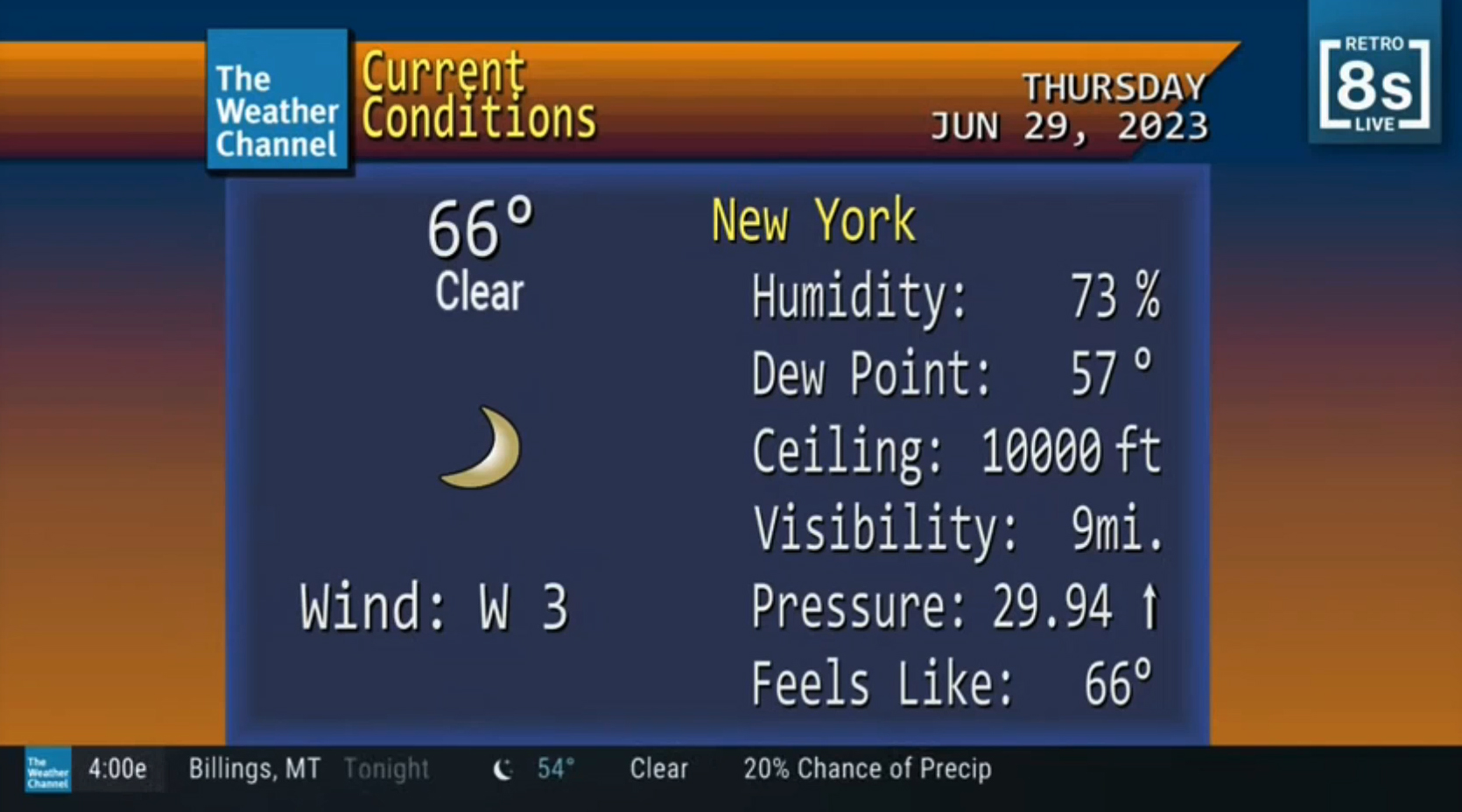Weather Channel jumps back in time for early morning ‘retro’ forecasts

Subscribe to NewscastStudio for the latest news, project case studies and product announcements in broadcast technology, creative design and engineering delivered to your inbox.
The Weather Channel is blasting back to its past with an early morning feature called “Retro 8s Live.”
Running as an hourlong block at 4 a.m. eastern, “Retro” recreates the channel’s iconic 1990s-era look (and sound) of banded orange and blue gradients paired with smooth jazz background music.
The segments recreate, as opposed to duplicate, the familiar look that the network used for years via Weather Star units installed in regional pay TV provider headends.

The designs, however, have been updated to be 16:9 and HD and use a different font.
Diehard fans who grew up on the channel in the 90s will note the graphics used during “Retro” are much less bitmapped, shedding the “8-bit” look that the Weather Star system generated at the time.
On-screen graphics also feature the present-day Weather Channel logo as well as the modern ticker along the bottom of the screen — along with a “Retro on the 8s Live” logo in the upper right of the screen that completely eschews the retro look.
It also does not use the highly robotic pre-Siri and pre-AI text-to-speech voice technology included in several versions of Weather Star, instead opting for recorded voiceover elements.

Throughout the hour, “Retro” shuffles between two opens, one using a block sans serif with beveled gradient strips and angled elements.

The other look is serif with curved accents.

“Retro” is a month-long experiment the network is trying out, reportedly with a chance to become a permanent feature.
The segment is not a true “Local on the 8s” feature, hence avoiding any reference to “local” in the “Retro 8s” name, though the weather data and maps shown do show present-day information and conditions.
In fact, the network continues to offer its automated local forecasts at 8, 18, 28, 38, 48 and 58 minutes past the hour during “Retro” using its present-day graphics.
“Retro,” meanwhile, essentially takes the place of what would, in a more typical hour, contain program content and runs with commercial breaks as well as the “real” local segments.
Another key difference is that “Retro 8s” is not localized, with the entire country receiving the same feed and weather data, rather than localized content inserted at pay TV provider headends.
The Weather Channel revolutionized the broadcast industry by not only dedicating 24 hours a day to weather, but also providing customized regional and local content inserted over the national feed. Cable providers could arrange to acquire a computer system, including Weather Star-generation units and install them in headends.
The systems were designed to take weather data feeds and display them on-screen in the form of fullscreen graphics and maps. Because the systems had to handle all graphical generation onboard, the design had a distinct look that was both indicative of trends of the day and a nod to the technical limitations of generating graphics from data feeds without the significant amount of computing power typically needed at the time.
For providers not equipped with a local system (or in the case of local technical issues), the network provides a national feed in place of Local on the 8s that shows weather from major cities and regions across the U.S.
As technology evolved, so did the systems, eventually growing up beyond the “retro” pixelated and banded look to the smooth, high definition text and graphics used today.
The “Retro” feature is a creative way to fill what is typically a little-watched block of time while still staying true to the network’s mission. By drawing on the “retro” look, the network can provide a unique look that’s still embedded in the brains of millions of those who watched the network’s early days.
Given the comparatively lower viewership available in these early hours, many networks prefer to run automated or repeat programming during early morning hours such as the 4 a.m. block, though at least part of this time period juts up against weather-heavy local newscasts in some time zones.
At least some of the music used during “Retro” is from Transition Music Corp., including cuts with titles such as “Stormy Weather.”
Competitor Fox Weather offers an overnight feed called “Night Light,” an automated, computer-generated loop showcasing national and global weather conditions, with the graphics largely depicting the world in the dark, lit primarily by clusters of light around major metro areas.
Subscribe to NewscastStudio for the latest news, project case studies and product announcements in broadcast technology, creative design and engineering delivered to your inbox.



tags
the weather channel
categories
Broadcast Design, Broadcast Industry News, Heroes, Weather